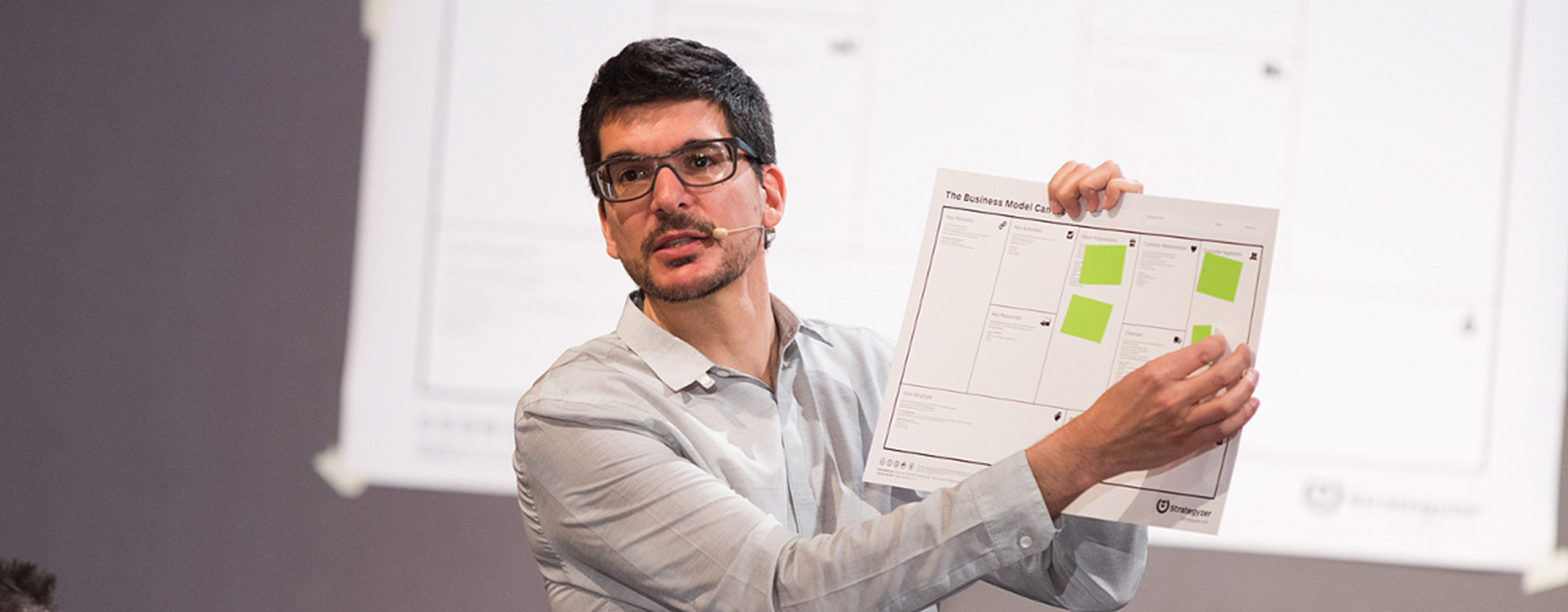Strategyzer conducts an innovation workshop at Twinery
A great business model lays the foundation for a good business proposition. Time and again the importance of having a good business model has been emphasized and who better to learn it from than Alexander Osterwalder, the co-founder of the acclaimed Business Model Canvas and Strategyzer, who conducted an innovation and business process workshop at the HIVE at Twinery with over 100 participants from MAS Holdings.
Innovation is not necessarily just about the business idea but also coming up with an innovative business model. By way of an insightful example and as an introduction to the Business Model Canvas, Alex discussed how Nespresso reinvented themselves through innovation by obtaining greater customer buy-in through the Nespresso pods rather than focusing on machine sales. The recurring revenue from the direct sale of pods also resulted in higher margins.
In addition to the Business Model Canvas, Alex also took the participants through the Value Proposition Canvas and gave them several activities to help clarify the relationship between the two. One of the highlights of the training was practicing our learnings on a current project or our specific business unit. This gave us the opportunity to understand areas of improvement in our business models and correctly identify the needs of our customers/consumers.
Alex brought in a Swiss cowbell which he used whenever he needed to grab our attention while we were too engrossed in the group activities. It definitely did its job.
Some of the business models analyzed during the training included Airbnb, Tesla, Amazon, Spotify and Owlet Babycare. Alex explained how some of the biggest companies push the boundaries when it comes to innovation, even going to the extent of cannibalizing their existing products in order to build new offerings.
Alex had lots of hands-on work incorporated into each section to keep us on our toes. One of these activities was Tom Wujec’s marshmallow challenge. The goal was to build the tallest structure using spaghetti sticks, tape, thread with the marshmallow placed right on top within the allocated time frame. The lesson to be taken away from this was ‘fail easy, fail fast’. This helped us understand the importance of conducting initial experiments to gather learnings. These learnings would then aid us in getting it right at the next attempt thus reducing the chance of failure by taking informed decisions.
The training was a great learning experience which helped us gain insights into understanding customer needs, asking the right questions from the right groups, the fundamentals of a business model, the four actions framework, modifying an existing business model and culture maps amongst many other tools. It was very insightful and the activities following each section ensured we completed the training with hands-on experience and inspired to use these learnings to aid our work.


